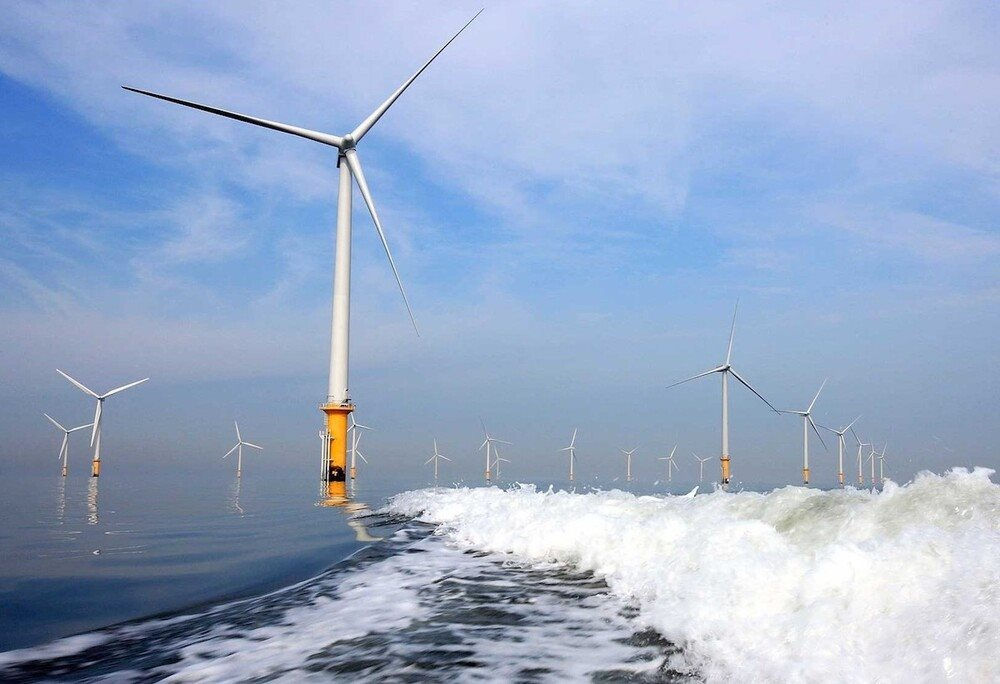
Ms. Cao Thi Thu Yen - renewable energy and environment expert, EVNPECC 1
Reporter: Dear Madam, recently EVN has proposed to the Government to create a mechanism to develop about 5,000MW of renewable energy sources in the North of Vietnam to ensure energy security. What do you think is the rationale for this proposal?
Ms. Cao Thi Thu Yen: Vietnam's energy demand is more increasing, while the traditional energy sources in the territory of Vietnam have almost reached the development threshold. Currently, Power Master Plan No. 8 clearly indicates the overall, long-term development orientation and follows the global trend of renewable energy (RE) development. Optimization in power supply and demand, and balancing in intra-regional and intra-regional are duly prioritized in this master plan.
It is forecast that power demand in the North will increase sharply, while Vietnam will stop developing new coal-fired power plants and there will be big fluctuations in the world in terms of supply and prices of fossil energy. Therefore, the trend of renewable energy development with the aim of ensuring energy security, especially for the North in the coming time, will be inevitable. However, RE is a limited source in respect of resource occupation (land, sea) and at the same time there is a rapid shift in technology and a reduction in investment rates, so the short/medium-term implementation plan needs to be carefully and synchronously taken into account.
EVN's development of renewable energy sources, especially taking the lead in deploying offshore wind power, will be appropriate in terms of both technical expertise and investment orientation while ensuring national interests and sovereignty in the Gulf of Tonkin. This is also a new direction for EVN in adapting to the context of decreasing financial resources for fossil energy and a transitional step for EVN in line with the Government's goal of being carbon neutral by 2050.
Reporter: Can you analyze more about the potential of wind power development in the Gulf of Tonkin in our country?
Ms. Cao Thi Thu Yen: According to research by many organizations including EVNPECC 1, the wind potential in the Gulf, including climate change factors, is considered to be quite good, and suitable for offshore wind power development. At an altitude of 100m, the average wind speed in this area is about 7.5- 8.5 m/s. According to the Danish energy agency (DEA), the offshore wind engineering potential in the region is around 18GW when the exclusion criteria are taken into account.
Currently, some northern coastal provinces have submitted proposals to develop offshore wind power sources such as Quang Ninh, Hai Phong, Thai Binh, and Nam Dinh, but the level of research is still quite different. To make it possible to perform a more accurate evaluation, it is necessary to have an overall study for the Gulf of Tonkin area with parameters on the same comparative level.
Reporter: To develop this renewable energy source in the Gulf of Tonkin, what difficulties need to be removed, madam?
Ms. Cao Thi Thu Yen: For the purpose of developing offshore wind power in Vietnam, it is necessary to overcome many challenges related to the technical level and harmonization in benefits and costs.
Regarding marine spatial management, offshore wind power exploitation areas are determined on the basis of technical, environmental and social assessments. More importantly, the offshore wind power source located on the Gulf of Tonkin is related to national security and other marine exploitation/use purposes such as fisheries, tourism or navigation as well as the need for nature conservation.
For marine areas that are sensitively zoned, the bidding shall be conducted in assigned/limited tenders for state groups to manage and exploit in order to ensure national interests in terms of national security and defense as well as socio-economic development.
Regarding electricity planning, a regional/provincial synchronous and master plan on the power supply and transmission with specific mobilization time will save the resources. A national agency conducting a preliminary assessment will avoid waste, duplication and objectivity in stakeholder consultations.
In terms of project finance and management, the offshore wind power investment rate is currently decreasing rapidly over time and depends on project scale, technology type, marine and coastal resources. The total investment for a project with a capacity of 1,000MW of fixed foundation offshore wind power in Vietnam is estimated at USD 3.15 billion and is forecasted to decrease to USD 2.15 billion by 2030. A large and reputable enterprise like EVN will be able to mobilize domestic and foreign resources with reasonable financial investment costs. EVN has many project management units being highly experienced in managing complex power projects with a capacity of thousands of MW.
Technically, offshore wind power is a new type of source, with high complexity in technology and weather dependence in construction. EVN has qualified consultancy units to support planning and investment/design consultancy as well as project management consultancy for the offshore wind power sector.
In the upcoming time, the offshore wind power potential needs to soon be assessed by a Vietnamese state-owned group like EVN, presiding over the comprehensive assessment and spearheading the implementation, in order to meet two urgent goals of power supply and serve as a premise for policy improvement.

Offshore wind power (Photo source: Natural Resources & Environment Newspaper)
Reporter: Many experts fear that if renewable energy sources are developed rapidly and strongly in the Gulf of Tonkin, we may face difficulties in power transmission. What is the solution to this problem, madam?
Ms. Cao Thi Thu Yen: Developing a large-scale offshore wind power source in the Gulf requires good preparation in terms of connection to shore and transmission system on land. Some necessary detailed planning/planning solutions for the medium/short term, such as The plan to deploy offshore wind power from the very beginning need to be synchronized with the one of building a connection system to bring power to shore. International experience shows that creating a common grid connection system for many offshore wind power projects onshore will lead to a more optimal cost of the power system. In addition, this also minimizes the social and environmental impacts compared to connecting the distributed grid for each project to the shore.
There should be a mechanism to encourage the application of the development of distributed renewable energy sources on the mainland for each specific region. Zoning criteria are based on the urgency of the demand, the potential of the power source or the difficulty of the power transmission.
A plan for the development of renewable energy sources, power grids and energy storage as oriented in Power Master Plan No. 8 should be prepared and specified for each locality. EVNPECC 1 has a lot of experience in advising EVN, provinces as well as non-EVN investors in providing suitable solutions for power connection and capacity release.
PV: Thank you very much!
evn.com.vn
Share